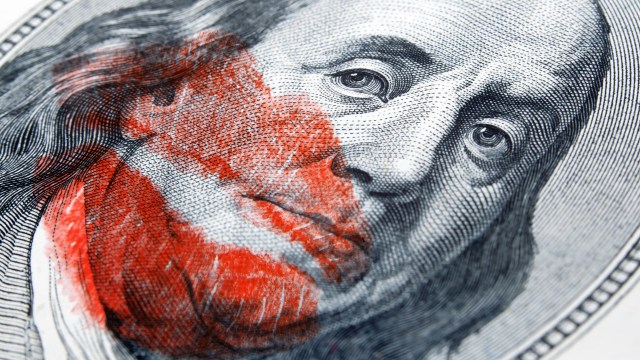Do emoji have a place in serious ???? ✍️?

(Big Think)
- A new paper looks at the 👍️ and 👎️ of using emojis in biomedical documentation.
- It’s the return of pictographs, millennia later.
- Do your thumbs even know how to avoid them?
Did you know that the Oxford Dictionary selected the “face with tears of joy” emoji as Word of the Year for 2015? You know, this one: 😂. Putting aside for the moment that the symbol’s official meaning is a phrase, not a word, we might also remember that its everyday meaning is actually a bit different: “laughing so hard I’m crying.” Such ambiguity aside, it’s indisputable that emoji — which have only been universally implemented since 2010 — have become important tools for shorthanding communication, especially for thumb-typists.
Vikas O’Reilly and colleagues at Emory University have therefore raised a question about leveraging the communicative power of emoji in a more serious context: “Is it time to start using the emoji in biomedical literature?” Their thoughts are published in The BMJ, and they’re thought-provoking.😬
O’Reilly’s team lays out the 👍️ and 👎️.
👍️ : Spin power, plus more fun and real-estate savings
Emoji are undeniably fun as a means of imparting intended subtext. O’Reilly furnishes a handful of examples to make his case, including:
- “In this issue Dr. Superstar and colleagues report miniaturising themselves and repairing. oncogenic DNA mutations by hand 😱🙏.”
- “It is with great interest that we read the article by Dr. Doe and colleagues 🙄 👀.”
Emoji’s side-commentary powers have found a welcome place in today’s snarky culture. It could be argued that the habits of the next generation of future medical researchers and writers may simply require accepting their use in a professional context since almost everyone under 30 uses emoji all the time.
Might emoji, asks O’Reilly, make medical documents more visually meaningful and fun? They could replace dry ranking symbols, such as asterisks and such, with pictographs. For example:
- * This is a three-level list
- ** Here’s the second level, with two asterisks
- *** Here’s the third, with three
But it could be:
- 👍 This three-level list starts with Good: thumbs-up
- 💪 Here’s the second level, moving onto Better, with strong approval
- 🏆 Here’s the third level: The Best
👎️ : On the other hand, what’s an emoji really mean?
Well, depends who you ask, as in the case of the “face with tears of joy” character. An emoji’s message may be dependent on one’s culture and what an image, object, or expression means in that particular place and at that particular time. O’Reilly mentions as an example the “call me hand” (🤙), which “is likely to be interpreted very differently by Hawaiians, Southern Californians, and coastal Brazilians (ie, shaka brah 🏄).” Likewise the peace sign (✌️) in America, which, turned around in the UK, is “f#%k you.”
What’s tempting, though, about emoji is the way in which they can often seem to convey a complex meaning in a single character. O’Reilly offers an example of how much space could be saved if:
A young child admitted by ambulance to an emergency department, in whom a rare disease is uncovered after unrevealing diagnostic studies and failed attempts at conventional treatment. She undergoes a surgical procedure, is discharged home, and makes a full recovery
Became:
👧🤢🚑🚨🏥👩⚕️🤒📋💉👩🔬🤔💊🤢🤔❗🦓😷✂️🛌⏳😃🏡🤾
Obvious, right? No?
This is a problem. Medical documentation has an obvious need for an exemplary level of clarity, since misreadings could be devastating for researchers, doctors, customers, and/or patients. It seems obvious that the introduction of emoji would make biomedical writing less clear, not more.
“Ask your doctor,” for example, becomes the iffy “🙏 your 💊.”
It’s nearly impossible to construct complex emoji passages that can be reliably translated. Consider this: If you search for emoji translators on the web, nearly every one you find, and there are lots of them, translates your language into emoji, not the other way around. This suggests creating an emoji story is a lot easier than interpreting one.
To illustrate a point, here are four of the web’s big science/medicine headlines of 2018 in emoji form, translated by one of those online emoji translators. Easy-peasy, or no thanks? (Answers are at the bottom of the article.)
1. Can half 🅰️ 🎓 📑 🇺🇸?
2. 🔝 🔟 things ➡️👤 didn’t 💡 about your 🍆
3. ❓️ ➡️👤 💆♀️ 😫 all the ⏱️
4. 👨💼 Giants 👀 To Become 📐🐘 Players In 👨⚕️
(O’Reilly, et al)
👎️ : To sum this ⬆️
Even if using emoji in biomedical documentation made sense, there would still be technical issues. First, there’s the lack of standardization. O’Reilly notes as an example just how many versions of Santa and Mrs. Claus there are, not that they come up in much in the life sciences.
In addition, some medical publication platforms don’t yet even support the emoji character set.
It seems the whole idea of using emoji for critical communication is a bit 😜 as things currently stand — or at least way ahead of its time — in biomedical documentation. This would be true, in fact of any writing that’s a matter of 🧬 or 💀.
Answers:
1. Can Half A Degree Save Us?
2. Top 10 Things You Didn’t Know About Your Penis
3. Why You Feel Tired All The Time
4. Business Giants Look To Become Big Players In Healthcare





